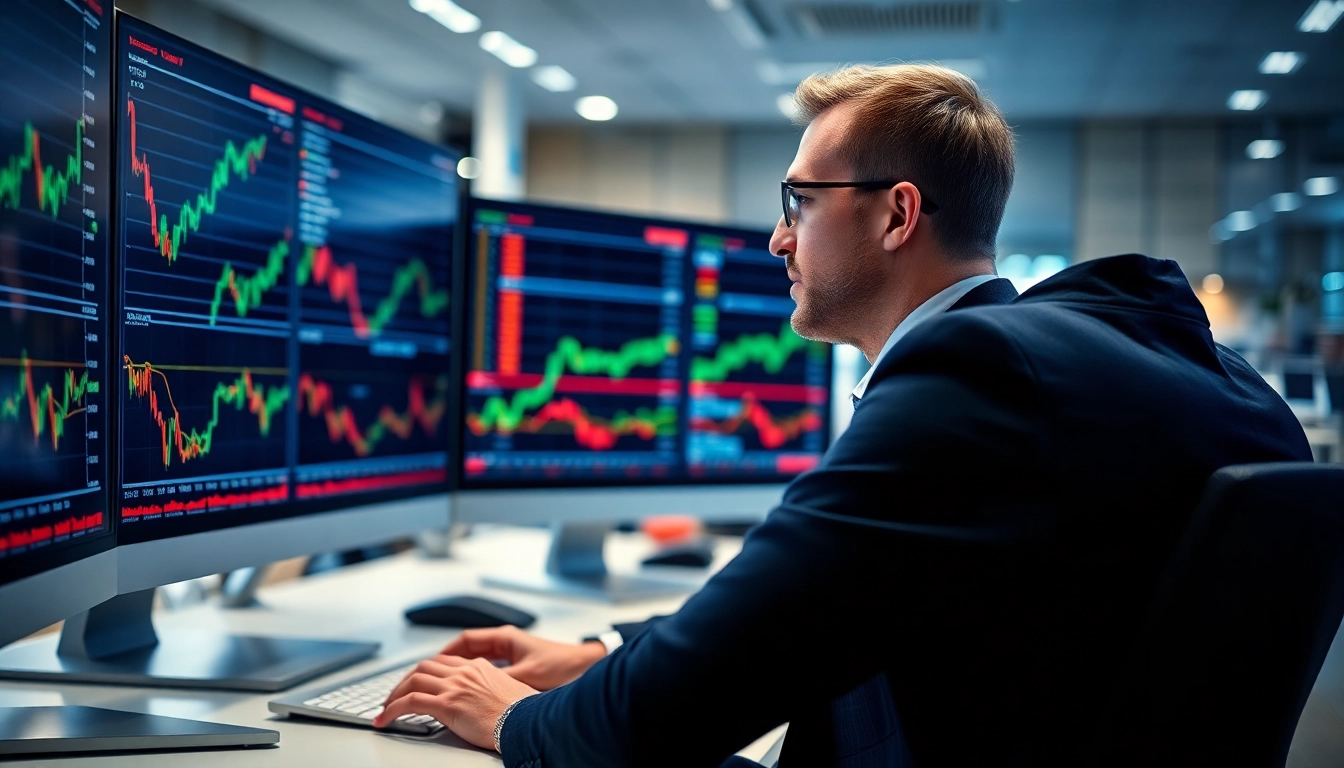Understanding the Basics of Trade Futures
Trade futures are a fascinating and complex component of financial markets that allow investors to buy and sell contracts based on the anticipated future price of assets such as commodities, stocks, or indices. These contracts serve as agreements to buy or sell an underlying asset at a predetermined price at a specified future date. Trade futures offer numerous opportunities but also come with their challenges. In this article, we will explore the essential concepts, benefits, strategies, challenges, and performance metrics associated with trading futures.
What are Trade Futures?
Futures contracts originated in the agricultural markets to help farmers and distributors lock in prices for their products. Over time, these contracts have evolved to include a wide range of assets. The concept of a trade futures contract is centered on speculation. Traders enter the futures market to profit from price movements, with contracts typically standardized by quantity and delivery date. When entering a contract, a trader is essentially agreeing to either buy (long position) or sell (short position) the underlying asset at a specified price in the future.
The Mechanics of Trade Futures
The mechanics of trading futures involve several key processes:
- Contract Specifications: Futures contracts come with specific details like contract size, expiration date, and underlying asset type. For instance, a crude oil futures contract may represent 1,000 barrels.
- Margin Requirements: To trade futures contracts, investors must deposit a fraction of the total contract value, known as margin. This serves as a security for the broker and allows for leverage, amplifying potential profits and losses.
- Mark-to-Market: Futures contracts are marked to market daily, meaning profits and losses are calculated at the end of each trading day, providing a real-time assessment of the trader’s position.
- Settlement: Futures can be settled in two ways: by physical delivery of the asset or by cash settlement, where the difference between the purchase and selling price is paid.
Key Terminology and Concepts
Understanding trade futures requires familiarity with specific terminology:
- Long Position: Buying a futures contract, betting that the asset’s price will increase.
- Short Position: Selling a futures contract, expecting the asset’s price to decline.
- Leverage: The use of borrowed capital to increase potential returns, which can magnify both gains and losses.
- Expiration Date: The last date on which a futures contract can be settled.
Benefits of Trading Futures
Futures trading offers several advantages that attract both seasoned investors and newcomers alike. Some of the key benefits include:
Leverage and Margin Advantages
One of the most significant advantages of trading futures is leverage. Because margin requirements are a fraction of the contract’s total value, investors can control large positions with relatively small amounts of capital. This means that even a slight price movement can result in substantial gains, making it an attractive proposition for traders looking to maximize their returns.
Diversification Opportunities
Futures contracts are available for a wide array of asset classes, including agricultural products, energy resources, metals, and financial instruments. This diversity allows traders to create balanced portfolios that can hedge against risks in their investments or capitalize on emerging market opportunities.
Liquidity in Futures Markets
Futures markets are known for their liquidity, meaning traders can buy and sell contracts with minimal price fluctuations. High liquidity is beneficial as it allows transactions to occur swiftly and easily, minimizing slippage and ensuring that traders can enter and exit positions effectively.
Strategies for Successful Trade Futures
To navigate the complexities of futures trading effectively, investors can employ various strategies that suit their trading styles and risk appetites. Here are some popular strategies:
Technical Analysis Techniques
Technical analysis is a critical element of successful futures trading. By studying price charts, trends, and various indicators such as moving averages and Relative Strength Index (RSI), traders can make informed predictions about future price movements. Specific strategies may involve:
- Trend Following: Identifying and riding established market trends to maximize profits.
- Momentum Trading: Capitalizing on significant price movement in one direction for short-term gains.
- Chart Patterns: Looking for recognizable formations like head and shoulders or triangles to signal potential trade opportunities.
Risk Management in Futures Trading
Effective risk management is essential for protecting one’s capital. Strategies may include:
- Setting Stop-Loss Orders: Predicting when to exit a losing position to limit potential losses.
- Position Sizing: Determining the amount of capital to allocate to each trade based on risk tolerance.
- Diversification: Spreading investments across different contracts to mitigate risks associated with any single asset.
Long vs. Short Positions
Understanding when to take a long or short position is crucial. A long position is taken when a trader expects the price of an asset to rise, while a short position is taken when anticipating a decline. Timing and market conditions significantly influence the effectiveness of these strategies.
Common Challenges in Trade Futures
While trading futures presents excellent opportunities, it also comes with several challenges that traders must navigate:
Market Volatility and Impact
The futures market can be highly volatile, influenced by various factors such as economic reports, geopolitical events, and weather conditions. Such fluctuations can lead to significant profit opportunities, but they also pose risks. Understanding the causes of volatility and being prepared for sudden price changes is essential for successful trading.
Emotional Decision-Making
Trading can evoke strong emotions, from excitement to fear. Emotional decision-making often leads to poor trading choices, such as overtrading during a winning streak or panicking during losses. Developing mental discipline and sticking to a well-defined trading plan can help mitigate emotional influences.
Regulatory Elements to Consider
Regulatory bodies oversee futures markets, requiring traders to understand compliance issues and regulations that may affect their trading activities. Familiarizing oneself with rules set by organizations like the Commodity Futures Trading Commission (CFTC) ensures that investors adhere to legal standards and avoid potential pitfalls.
Measuring Performance in Trade Futures
Evaluating performance is vital for continuous improvement in futures trading. Traders should consider the following key performance indicators (KPIs) and techniques:
Key Performance Indicators (KPIs)
Common KPIs to measure trading performance include:
- Win Rate: The percentage of winning trades relative to total trades.
- Return on Investment (ROI): The profitability of trades in relation to the capital invested.
- Average Profit and Loss: Analyzing the average amount earned on winning trades and lost on losing trades to evaluate overall performance.
Reviewing Trading Strategies
Periodic review of trading strategies helps traders assess their effectiveness. This process may involve analyzing trade records, examining market conditions before and after trades, and adjusting strategies as needed.
Adjusting Tactics Based on Performance
Utilizing data analytics and feedback from previous trades allows traders to adjust tactics effectively. Lessons learned from past mistakes and successes provide a roadmap for refining approaches to improve future performance.


